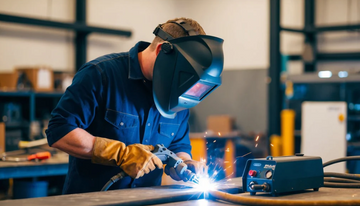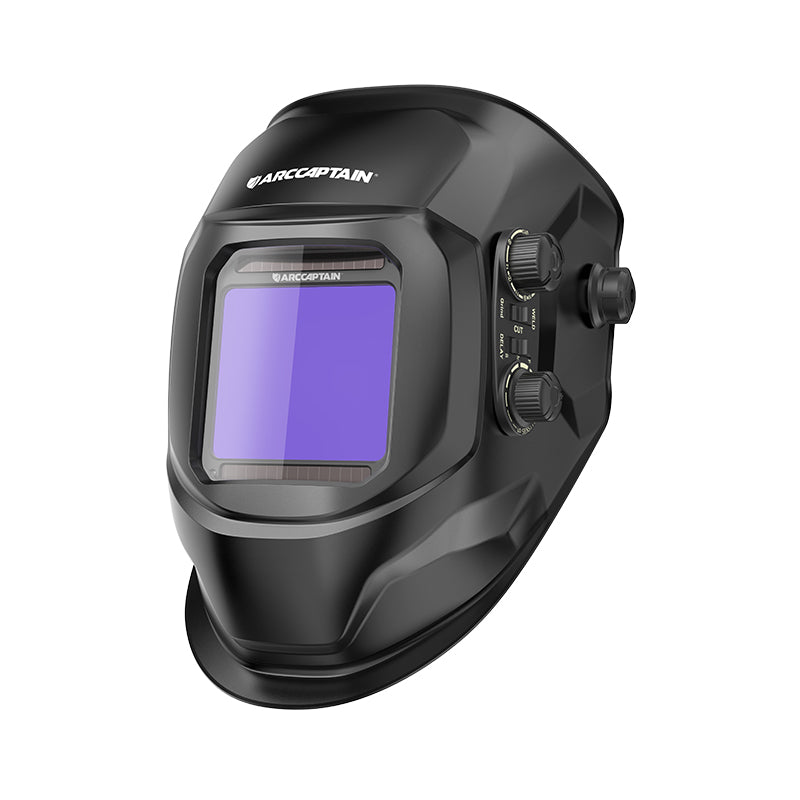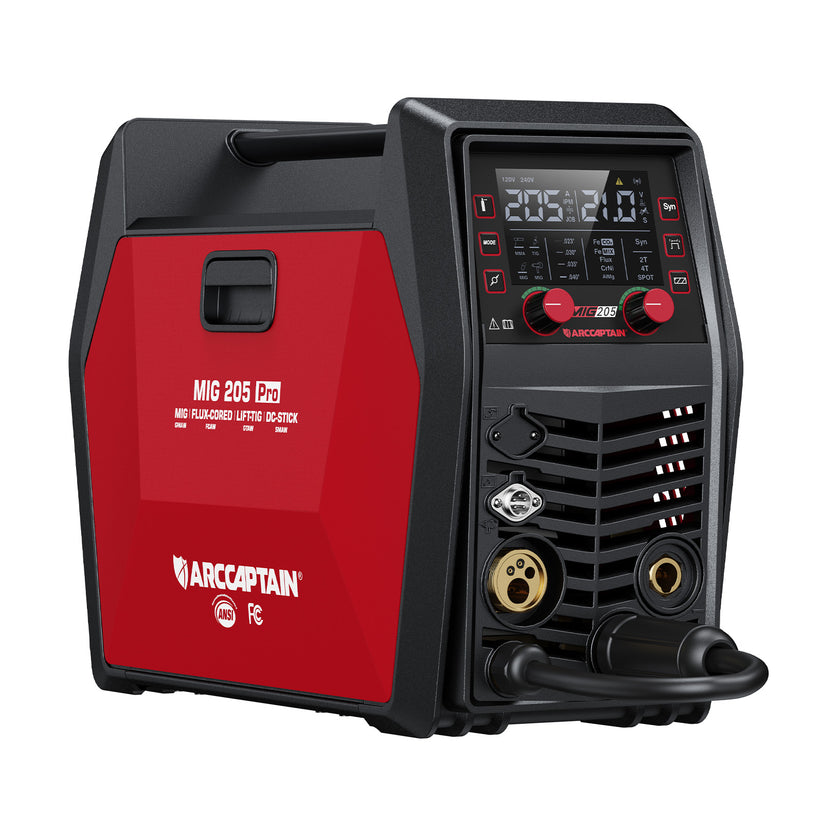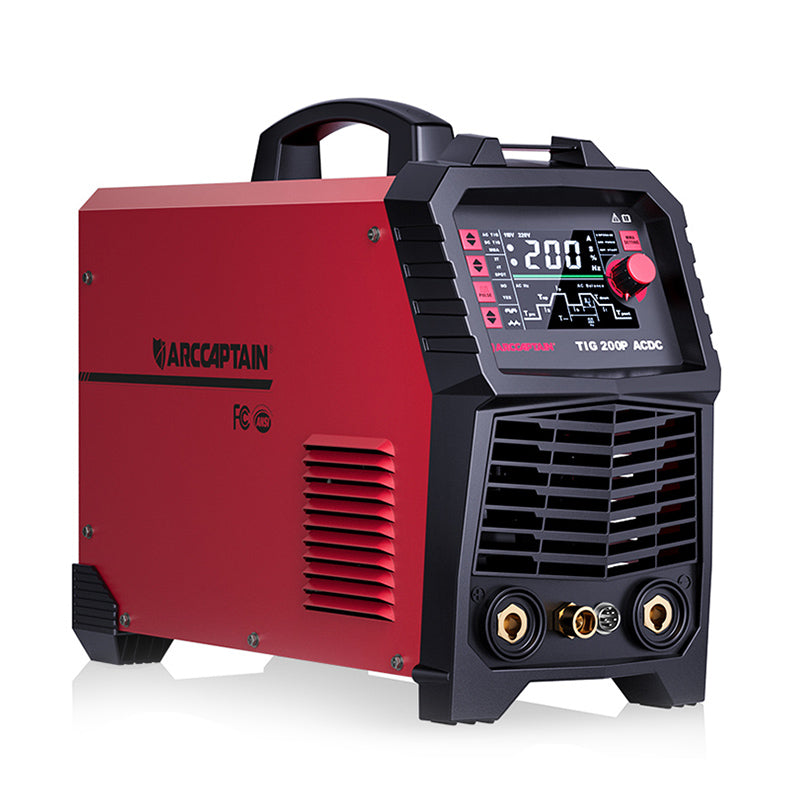
Welding is one of the most important industrial skills in the world. From building bridges to repairing farm equipment, welders keep our world running.
But welding is also risky. Every time you strike an arc, you are working with high heat, electricity, and fumes that can harm your health if you are not careful.
This guide will walk you through the most common welding hazards, the special risks that come with welding machines, and the top safety rules every welder should follow.
Whether you are new or have years of experience, there is always something new to learn about staying safe.
Welding Hazards Every Welder Should Know
Welding exposes workers to several serious hazards that can affect both short term and long term health. By understanding these risks, you can take the right steps to prevent injuries and illnesses.
1. Fumes and Gases
Welding produces invisible fumes and gases like ozone, nitrogen oxide, nickel, and chromium oxides. Breathing them in can cause pneumonia, asthma, metal fume fever, cancer, and lung irritation.
Stay safe: Ventilate your workspace, limit exposure, and wear a respirator when needed.
👉 Don’t forget to browse this safety equipment guide for the best welding PPE.
2. Fire and Explosions
Sparks can ignite flammable materials in your workspace. Fires spread quickly during welding, which is why fire prevention is critical.
Stay safe: Keep extinguishers nearby, clear flammable items, and have an emergency plan.
3. Electric Shock – The Biggest Welding Hazard
Electric shock is the most dangerous welding risk and can be fatal. It happens when you touch live wires, bare cables, or the machine.
Stay safe: Wear dry gloves and boots, keep your workspace dry, and inspect cables before welding.
👉 Learn more: How to prevent electric shock in welding.
4. Noise Hazards
Noise is often overlooked in welding, but it can cause permanent hearing loss over time. Cutting and welding processes frequently produce sound levels above safe limits.
Welding and cutting often produce noise above safe levels. OSHA sets a legal limit of 90 dBA over 8 hours, but once noise reaches 85 dBA, hearing protection is required.
Stay safe: Always wear earplugs or earmuffs in noisy environments.
5. Radiation Exposure (UV & IR)
The arc from welding produces intense ultraviolet and infrared radiation. Without protection, this radiation can damage eyes and skin.
Stay safe: Use the right helmet shade, long sleeves, and gloves.
6. Burns
Burns are one of the most common welding injuries. Sparks, molten spatter, and hot metal can cause severe skin damage in seconds.
Stay safe: Wear gloves, jackets, aprons, and never touch freshly welded pieces without checking heat.
Welding Machine Safety Hazards
Aside from general hazards, welding machines themselves pose risks that are sometimes overlooked. Knowing how machines can fail or cause harm helps you stay safer on the job.
Open Circuit Voltage (OCV)
Stick welders can have OCV up to 110V, which can shock you.
Stay safe: Use a Voltage Reduction Device (VRD) to lower OCV.
Overvoltage, Overcurrent, and Overheating
Many modern welding machines include built in features like Overvoltage Protection (OVP), Overcurrent Protection (OCP), and thermal shutdown sensors. These are manufacturer safety features, not OSHA requirements, but they add valuable protection.
Overloading the Duty Cycle
Every welder has a duty cycle rating that limits how long it can operate before overheating. Ignoring this rating can damage the machine and create fire hazards.
Stay safe: Follow the duty cycle chart in your manual. Many welders have automatic overload protection.
Static Electric Shock
While static charges can build up, the real hazard is electric shock from live circuits.
Stay safe: Always ground your machine properly and wear insulated gloves and boots.
👉 Curious? Is it safe to weld in the rain?
10 Welding Safety Rules

These rules combine OSHA requirements with industry best practices. Following them consistently will help you avoid accidents and protect your long term health.
Rule 1: Wear Proper PPE
The number one rule in welding is to always wear the right protective gear. Helmets, gloves, jackets, respirators, and boots shield you from burns, radiation, and electric shock.
You May Shop

Large View Auto Darkening Welding Helmet 3.94"X3.66" Welding Helmet HSH-G999
$99.99 $59.99
See ProductRule 2: Ensure Good Ventilation
Welding fumes can cause serious lung problems if they build up in your workspace. Proper ventilation or exhaust systems reduce exposure and keep the air safe to breathe.
Rule 3: Keep Fire Safety Equipment Nearby
Because welding involves sparks and heat, fire is always a risk. Keeping extinguishers and fire blankets within reach ensures you can respond quickly in an emergency.
Rule 4: Inspect Equipment Before Use
Damaged cables or hoses can lead to electric shock or equipment failure. A quick inspection before each job helps you catch problems early and avoid accidents.
Rule 5: Follow Duty Cycle and Machine Ratings
Every welding machine has limits on how long it can safely operate. Respecting these ratings prevents overheating, protects the machine, and reduces fire risks.
Rule 6: Keep Workspace Dry and Organized
Water and electricity are a deadly combination. A clean, dry, and organized workspace also reduces tripping hazards and helps you stay focused on your weld.
Rule 7: Use Correct Welding Techniques
Shortcuts in welding can put you and others at risk. Proper technique not only improves safety but also ensures stronger, higher quality welds.
Rule 8: Never Weld on Flammable Containers
Even empty containers can still hold explosive vapors. Welding on them can cause deadly explosions, so always clean or purge containers before use.
Rule 9: Follow Safety Rules and Company Policies
Welding safety rules include PPE, ventilation, fire watch, and electrical safety. Following both OSHA standards and company policies keeps everyone on the job site safe.
Rule 10: Stay Alert and Avoid Fatigue
Fatigue slows your reaction time and makes mistakes more likely. Staying alert helps you notice hazards, use equipment properly, and make safer decisions.
Welding Safety for Beginners
 If you are just starting out, welding safety may feel overwhelming. Building good habits early will protect you and make you a better welder.
If you are just starting out, welding safety may feel overwhelming. Building good habits early will protect you and make you a better welder.
- Golden rule: Always wear PPE before striking an arc.
- Dos: Wear PPE, inspect your machine, ventilate your area.
- Don’ts: Do not weld in wet areas, skip inspections, or look at the arc without a helmet.
Conclusion
Welding is a rewarding trade, but it comes with real risks. By understanding both general hazards and machine-specific dangers, and by following the 10 safety rules, you can protect yourself from serious accidents.
For more helpful welding guides and tips, explore resources from Arccaptain.
And if you are looking to upgrade your setup, do not forget to check out Arccaptain’s welding tools, safety gear, and welding machines. They are built to keep you safe while delivering top performance.
Check Related Products

Arccaptain MIG205 Pro Gas MIG Welder Stainless Steel Multi Process Machine
$799.99 $499.99
See ProductFrequently Asked Questions About Welding Safety
What not to do while welding?
Never weld without the proper PPE, because this leaves you exposed to burns, radiation, and electric shock. You should also avoid welding in wet or damp areas since water greatly increases the risk of electrocution. Finally, skipping equipment inspections is dangerous because small issues can quickly turn into serious accidents.
What is the golden rule in welding?
The golden rule in welding is to always wear your PPE before striking an arc. This includes helmets, gloves, jackets, respirators, and other protective gear depending on the job. By putting safety first, you reduce the risk of almost every major welding hazard.
What is 111 in welding?
111 refers to Manual Metal Arc (MMA) welding, also known as stick welding. It is one of the most widely used processes because it works on many metals and in different environments. While versatile, it requires skill to control the arc and avoid defects in the weld.
What’s the hardest welding to do?
Many welders consider TIG welding (GTAW) to be the most difficult process. It requires excellent hand‑eye coordination since one hand controls the torch while the other feeds filler rod. The precision needed makes it challenging but also ideal for high‑quality, detailed welds.


